What Is Melange Fabric?
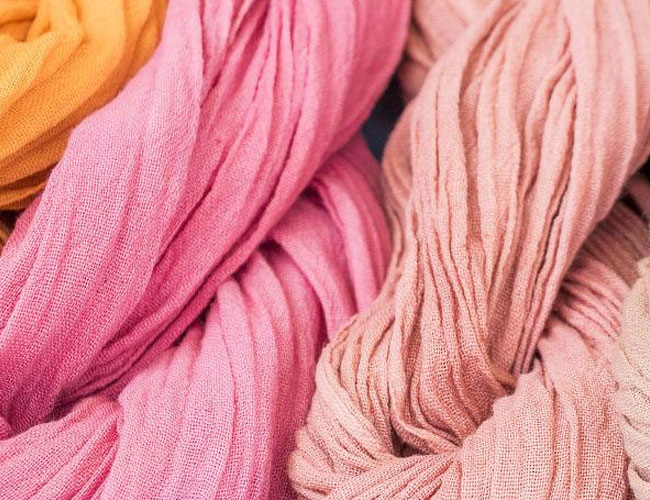
Melange fabric is a type of textile that is created by blending different colored fibers to produce a heathered or mottled appearance. The word "melange" is derived from the French language and translates to "mixture" or "medley," which accurately describes the varied and blended look of the fabric.
The production of melange fabric involves combining different colored fibers or yarns during the spinning process. This can be achieved using fibers of different shades or by blending dyed fibers. The result is a fabric with a unique, multi-colored, or speckled appearance.
Melange fabrics are often used in the manufacturing of clothing, including shirts, sweaters, and other knitwear items. The blending of colors in melange fabric can add visual interest and texture to the finished product. Additionally, melange fabrics can be made from a variety of materials, including cotton, polyester, wool, or a blend of different fibers.
The popularity of melange fabrics lies in their ability to provide a subtle and sophisticated aesthetic, making them a popular choice for both casual and more formal apparel.
The History of Melange Fabric.
The history of melange fabric can be traced back to the development of textile manufacturing processes and the desire to create fabrics with unique visual characteristics. While it's challenging to pinpoint an exact moment when melange fabric was first produced, its origins are rooted in traditional textile practices.
1. Early Textile Production: The practice of blending different fibers to create textiles has ancient origins. Early weavers and spinners experimented with combining fibers of varying colors to achieve different patterns and hues in woven fabrics.
2. Evolution of Spinning and Dyeing Techniques: As spinning and dyeing techniques advanced over the centuries, textile artisans gained more control over the color and texture of fabrics. This led to the intentional blending of differently colored fibers to create a melange effect.
3. Industrial Revolution: The Industrial Revolution in the 18th and 19th centuries brought about significant advancements in textile manufacturing. The use of spinning machines and mechanized looms allowed for more precise control over yarn production, making it easier to create melange fabrics on a larger scale.
4. Rise of Synthetic Fibers: In the 20th century, the development and widespread use of synthetic fibers, such as polyester, further expanded the possibilities for creating melange fabrics. Synthetic fibers could be easily dyed and blended to achieve specific color combinations.
5. Fashion and Textile Trends: Melange fabrics gained popularity in the fashion industry as designers and consumers sought textiles that offered a unique, textured appearance. The melange look became particularly associated with casual and sportswear, providing a relaxed yet stylish aesthetic.
6. Contemporary Usage: Today, melange fabrics are produced using a variety of fibers, both natural and synthetic. They are used in a wide range of clothing items, including shirts, sweaters, and activewear. The popularity of melange fabrics persists due to their ability to add visual interest and a touch of sophistication to garments.
While the term "melange" is more commonly associated with modern fashion, the concept of blending fibers for unique textile effects has deep historical roots in the world of fabric production.
The Process of Melange Fabric.
The production process of melange fabric involves blending different colored fibers or yarns to achieve a varied and mottled appearance. The process can vary depending on the type of fibers used (natural or synthetic) and the desired characteristics of the final fabric. Here is a general overview of the process:
1. Degreasing:
Use chemical solvents or high-temperature water washing methods to remove grease and other stains from textiles. Common chemical solvents include gasoline, alcohol, soap oil, etc. Suitable solvents can be selected based on different stains and textile materials.
2. Bleaching:
Use oxidizing substances such as hydrogen peroxide, sodium hypochlorite, etc. to remove pigments and stains from textiles, making them appear white or light colored. During the bleaching process, attention should be paid to controlling temperature and time to avoid damage to textiles.
3. Alkali washing:
Using alkaline substances such as soda ash, caustic soda, etc. to clean textiles, remove surface impurities and stains, and also prepare for the subsequent dyeing process.
4. Choose dye:
Choose appropriate dyes based on the desired color and material, such as acid dyes, reactive dyes, direct dyes, etc.
5. Prepare dye solution:
Dissolve the dye in water and prepare a certain concentration of dye solution. According to the properties and dyeing requirements of the dye, some additives such as leveling agents, softeners, etc. can also be added.
6. Dyeing process:
Immerse the preprocessed textiles in the dye solution and react with the dyes through heating or other methods to achieve the dyeing effect. During the dyeing process, attention should be paid to controlling temperature, time, and dye concentration to ensure dyeing quality and uniformity.
7. Water washing:
After dyeing, excess dyes and chemicals should be cleaned to ensure the softness and smoothness of the textile. During the washing process, attention should be paid to controlling the water temperature, washing time, and washing method to avoid damage to the textiles.
8. Drying:
Dry the washed textiles to ensure they are dry and maintain a stable shape. During the drying process, attention should be paid to controlling temperature and time to avoid damage to textiles.
9. Cutting and Sewing:
The finished blended fabric will be cut into samples and then sewn together to make the final garment.
10. Finished product inspection:
Conduct quality inspection on the dyed fabric after drying, including color, color fastness, texture, size, etc., to ensure compliance before packaging and leaving the factory.
In addition to the above steps, other treatments may also be carried out as needed in the actual production process, such as functional finishing, antibacterial treatment, etc., to meet the needs of different customers. Meanwhile, the methods and details of pretreatment, dyeing, and post-treatment may also vary for textiles of different materials and uses.
Is Melange for Summer or Winter?
Melange fabric can be suitable for both summer and winter seasons, depending on the type of fibers used and the weight of the fabric. The versatility of melange fabric lies in its ability to be produced in various weights and compositions, accommodating different climate preferences.
1. Summer Melange Fabrics:
- Lightweight Materials: Melange fabrics made from lighter-weight and breathable fibers, such as cotton or linen, can be well-suited for summer. These fabrics allow air circulation, helping to keep the body cool in warm weather.
- Short-Sleeved Shirts: Melange cotton or linen shirts, for example, can be comfortable and stylish choices for summer casual wear.
- T-shirts and Polos: Melange knit fabrics, like those used for T-shirts and polo shirts, are often popular in summer due to their comfort and breathability.
2. Winter Melange Fabrics:
- Heavier Materials: Melange fabrics made from heavier or warmer fibers, such as wool or blends with synthetic insulating materials, can provide warmth and insulation suitable for colder seasons.
- Sweaters and Knitwear: Melange wool or wool-blend fabrics are commonly used for winter sweaters and knitwear, providing both style and warmth.
- Layering Pieces: Melange fabrics in heavier weights can be used for winter layering pieces like cardigans or pullovers.
3. Year-Round Versatility:
- Some melange fabrics, especially those made from blended fibers or innovative textile technologies, offer a balance between breathability and warmth. These fabrics can be comfortable for transitional seasons like spring and fall.
Advantages of Melange Fabric.
Melange fabric offers several advantages, contributing to its popularity in the textile and fashion industries. Here are some of the key advantages of melange fabric:
1. Aesthetic Appeal:
- Unique Appearance: The blended and mottled appearance of melange fabric gives it a distinctive and visually interesting look. This aesthetic quality adds depth and texture to garments, making them stand out.
2. Versatility:
- Suitable for Various Styles: Melange fabric can be used in a wide range of garment styles, from casual wear like T-shirts and sweaters to more formal or fashionable pieces. Its versatility makes it a popular choice for different types of clothing.
3. Textural Variation:
- Enhanced Texture: The combination of differently colored fibers creates a textured surface, enhancing the overall feel and touch of the fabric. This textural variation contributes to the tactile appeal of melange garments.
4. Camouflaging Effects:
- Concealing Stains and Wear: The speckled or heathered appearance of melange fabric can help conceal minor stains and signs of wear, making it a practical choice for everyday clothing that may face regular use.
5. Fashion Trend:
- Trendy Aesthetic: Melange fabrics have been associated with contemporary fashion trends, appealing to consumers looking for modern and stylish clothing options.
6. Color Range:
- Wide Range of Colors: The use of differently colored fibers allows for a broad spectrum of color options in melange fabrics. This variety caters to diverse consumer preferences and fashion trends.
7. Breathability:
- Depending on Fiber Choice: Melange fabrics made from breathable fibers, such as cotton or linen, can provide comfort in warmer weather. The breathability of these fabrics makes them suitable for summer clothing.
8. Seasonal Adaptability:
- Available in Various Weights: Melange fabrics can be produced in different weights, making them suitable for both summer and winter garments. Lighter versions are comfortable in warm weather, while heavier options offer warmth in colder seasons.
9. Innovation and Technology:
- Blend of Fibers: Advances in textile technology allow for the blending of various fibers, enhancing the performance characteristics of melange fabrics, such as moisture-wicking, stretch, or durability.
10. Popular in Activewear:
- Comfort and Style: Melange fabrics, especially those with added performance features, are often used in activewear due to their combination of comfort, style, and functionality.
These advantages make melange fabric a sought-after choice for designers and consumers looking for textiles that not only provide aesthetic appeal but also offer versatility and comfort in various applications.
Disadvantages of Melange Fabric.
While melange fabric has many advantages, it also comes with certain disadvantages that should be considered. Here are some potential drawbacks of melange fabric:
1. Color Variation:
- Inconsistency: Achieving consistent color variation in melange fabric can be challenging. The blending of fibers may result in slight color variations, and this inconsistency might be considered a disadvantage in applications where uniformity is critical.
2. Limited Color Control:
- Less Precision in Color Matching: Achieving precise color matching can be more difficult with melange fabrics compared to solid-colored fabrics. This limitation may be a drawback in situations where exact color uniformity is essential.
3. Durability Concerns:
- Abrasion Resistance: Some melange fabrics may have lower abrasion resistance compared to solid-colored fabrics, especially if the blending process involves delicate fibers. This can impact the durability of the fabric, making it more prone to wear and tear.
4. Dyeing Challenges:
- Dye Penetration: In some cases, achieving consistent dye penetration throughout the fibers can be challenging. This may result in variations in color intensity or shading within the fabric.
5. Limited Fiber Choices:
- Availability of Blending Fibers: The choice of fibers available for blending may be limited, and certain fibers may not blend well together. This limitation can impact the variety of textures and characteristics achievable with melange fabrics.
6. Care Instructions:
- Special Care Requirements: Some melange fabrics may require special care instructions, such as avoiding exposure to strong sunlight or specific cleaning methods. Consumers may need to be aware of and follow these instructions to maintain the fabric's appearance.
7. Cost Factors:
- Production Costs: The blending and dyeing processes involved in creating melange fabrics can be more complex and may involve additional production steps, potentially leading to higher manufacturing costs.
8. Trend Sensitivity:
- Fashion Trends: While the trendy aesthetic of melange fabric is an advantage, it can also be a disadvantage if the fabric becomes closely associated with a particular fashion trend. This could result in the fabric appearing dated when trends change.
9. Environmental Impact:
- Dyeing Processes: The dyeing processes used in creating melange fabrics may involve chemicals and water usage, contributing to environmental concerns. However, advancements in eco-friendly dyeing methods aim to mitigate these issues.
10. Consumer Preferences:
- Varied Preferences: While many people appreciate the unique appearance of melange fabric, individual preferences for solid colors or different patterns may lead some consumers to favor other types of textiles.
It's important to note that the disadvantages mentioned can vary depending on the specific production methods, fiber choices, and intended applications of melange fabrics. Additionally, ongoing advancements in textile technology aim to address some of these challenges.
The Use of Melange Fabric.
Melange fabric finds use in a variety of applications across the fashion and textile industry. Its unique and visually interesting appearance, as well as its versatility, makes it suitable for a range of clothing and accessory items. Here are some common uses of melange fabric:
1. Casual Wear:
- Melange fabrics are frequently used in the production of casual wear, including T-shirts, polo shirts, and casual shirts. The blended and heathered look adds a touch of style to everyday clothing.
2. Sweaters and Knitwear:
- Melange fabrics, particularly those made from wool or wool blends, are popular for sweaters, cardigans, and other knitwear. The textured appearance enhances the visual appeal of these winter garments.
3. Activewear:
- Melange fabrics with performance features, such as moisture-wicking, breathability, and stretch, are commonly used in activewear. This includes sports shirts, leggings, and other athletic clothing.
4. Outerwear:
- Jackets, hoodies, and other outerwear items often incorporate melange fabrics. The unique appearance of the fabric adds a fashionable element to outer layers.
5. Socks and Undergarments:
- Melange fabrics are also used in the production of socks, underwear, and other intimate apparel. The fabric's comfort and aesthetic appeal make it suitable for these items.
6. Accessories:
- Scarves, hats, and gloves made from melange fabrics can provide a stylish accessory option. The blended colors add visual interest to these accessories.
7. Children's Clothing:
- Melange fabrics are used in children's clothing, offering a playful and trendy look. The fabric's versatility makes it suitable for a range of kids' apparel.
8. Home Textiles:
- Melange fabrics are not limited to clothing; they are also used in home textiles. This includes items such as bedspreads, throw blankets, and decorative cushions.
9. Fashion Apparel:
- Melange fabrics are incorporated into various fashion apparel items, including dresses, skirts, and blouses. The fabric's unique appearance adds a touch of sophistication to fashion-forward designs.
10. Corporate and Uniform Clothing:
- Melange fabrics are used in corporate and uniform clothing, providing a more modern and stylish alternative to traditional solid-colored options.
11. Blend with Other Fabrics:
- Melange fabrics can be blended with other types of textiles, such as denim or chambray, to create hybrid fabrics that combine different textures and visual elements.
The diverse applications of melange fabric demonstrate its adaptability to different styles, seasons, and occasions. Whether used in casual or formal settings, in activewear or knitwear, melange fabric continues to be a popular choice for designers and consumers seeking both aesthetic appeal and comfort.
Can Melange Be 100% Cotton?
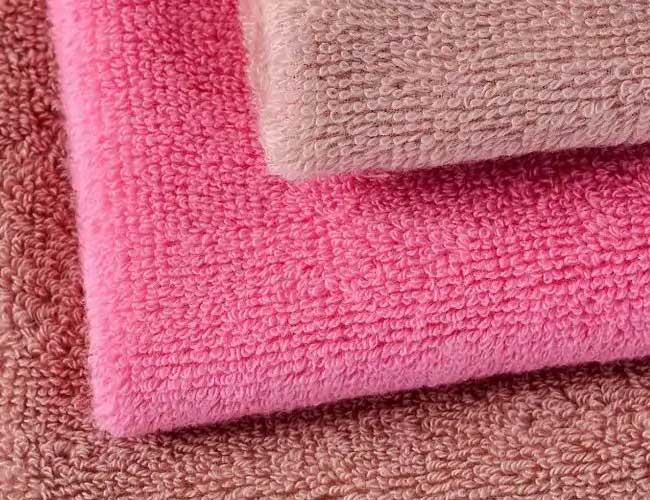
Color weaving is a weaving method, and it has nothing to do with whether it is made of pure cotton material.
The melange fabric can be made from 100% cotton. The term "melange" refers to the appearance of the fabric, characterized by a blended or mottled look achieved by combining differently colored fibers. While melange fabrics can be made from various fibers, including synthetic ones like polyester or blends of different materials, they can also be composed entirely of natural fibers such as cotton.
In the case of 100% cotton melange fabric:
1. Fiber Blending: Different colored cotton fibers are blended during the spinning process to create the melange effect. This blending of colors can result in a heathered or speckled appearance, adding visual interest to the fabric.
2. Dyeing Process: Cotton fibers may be dyed in various shades before blending, or the blending itself may create a melange effect. The dyeing process can contribute to the unique and varied coloration of the fabric.
3. Fabric Applications: Melange fabrics made from 100% cotton can be used for a wide range of clothing items, including T-shirts, shirts, dresses, and other casual or everyday wear.
It's important to note that the specific characteristics of 100% cotton melange fabric will depend on factors such as the quality of the cotton, the dyeing process used, and any additional finishes applied during manufacturing. As always, it's recommended to check the care label and product information for details on the fabric's composition, care instructions, and any specific features it may have.
Types of Melange Fabrics.
Melange fabrics come in various types, depending on the fibers used, the blending process, and the intended application. Here are some common types of melange fabrics:
1. Cotton Melange:
- Cotton melange fabrics involve blending different colored cotton fibers to create a heathered or mottled appearance. These fabrics are often used in casual wear, including T-shirts and lightweight summer garments.
2. Wool Melange:
- Wool melange fabrics are created by blending differently colored wool fibers. These fabrics are popular for knitwear, sweaters, and other cold-weather garments, offering both warmth and a unique aesthetic.
3. Polyester Melange:
- Polyester melange fabrics involve blending different shades of polyester fibers. These fabrics can be used for a variety of applications, including activewear, outerwear, and casual clothing.
4. Linen Melange:
- Linen melange fabrics are created by blending differently colored linen fibers. Linen's natural texture and breathability make these fabrics suitable for summer clothing like shirts and lightweight dresses.
5. Blended Melange:
- Blended melange fabrics combine different types of fibers, such as cotton and polyester or wool and acrylic. These blends offer a combination of characteristics from each fiber type and can be used for various purposes.
6. Knit Melange:
- Knit melange fabrics are created using knitting techniques, often with a blend of different colored yarns. These fabrics are commonly used for T-shirts, sweaters, and other knitwear items.
7. Viscose Melange:
- Viscose melange fabrics involve blending differently colored viscose fibers. Viscose has a smooth and silky feel, making these fabrics suitable for both casual and more formal attire.
8. Silk Melange:
- Silk melange fabrics combine differently colored silk fibers, offering a luxurious and smooth texture. These fabrics are used in elegant and high-end fashion pieces.
9. Jersey Melange:
- Jersey melange fabrics are knit fabrics often used for T-shirts and other casual wear. They are created using jersey knitting techniques with a blend of differently colored yarns.
10. Performance Melange:
- Performance melange fabrics incorporate technical features such as moisture-wicking, quick-drying, and stretch properties. These fabrics are popular in activewear and sportswear.
11. Denim Melange:
- Denim melange fabrics combine the classic look of denim with the mottled appearance of melange. These fabrics are used for casual denim clothing, providing a unique twist on traditional denim.
12. Heathered Melange:
- Heathered melange fabrics have a speckled or irregular appearance, created by blending fibers of different colors. These fabrics are versatile and can be used in various clothing items.
Is Melange Fabric Waterproof?
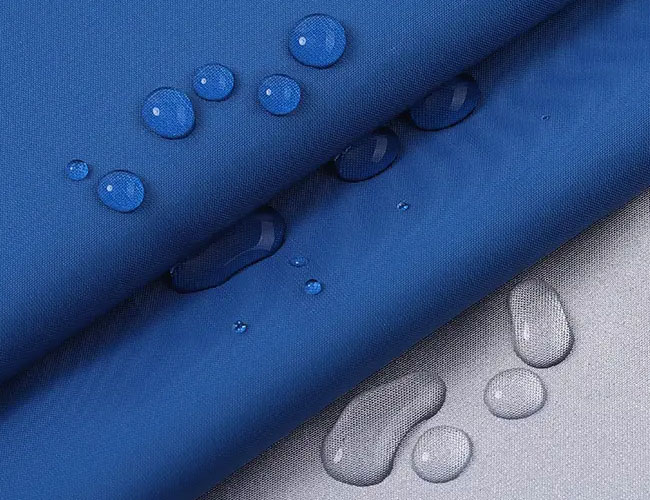
Melange fabric itself is not inherently waterproof. The water resistance or waterproof properties of a fabric depend on its specific composition, finish, and treatments applied during the manufacturing process. Melange fabric can be made from a variety of fibers, including natural ones like cotton or wool, as well as synthetic fibers like polyester. Each type of fiber may have different water-resistant characteristics.
If water resistance is a specific requirement, it's important to consider the following factors:
1. Fabric Composition:
- Natural Fibers: Fabrics made from natural fibers like cotton or linen are generally not inherently waterproof. However, they can be treated with water repellent finishes to enhance their resistance to water.
- Synthetic Fibers: Some synthetic fibers, such as polyester or nylon, inherently repel water to some extent due to their hydrophobic nature. Fabrics made from these fibers may be more water-resistant than those made from natural fibers.
2. Finishes and Treatments:
- Manufacturers may apply water-resistant finishes or coatings to fabrics, including melange fabrics, to improve their ability to repel water. Common treatments include DWR (Durable Water Repellent) coatings, which help water bead up and roll off the fabric.
3. Layering and Construction:
- Water resistance can also be influenced by the construction of the fabric. Layered or laminated fabrics, where a waterproof membrane is added between layers, can enhance water resistance.
4. Care and Maintenance:
- The water resistance of any fabric, including melange fabric, may diminish over time with wear and washing. Following proper care instructions and, if applicable, reapplying water-resistant treatments can help maintain water repellency.
When considering melange fabric for applications where water resistance is important, check the product information or consult with the manufacturer for details on the fabric's specific properties. If the fabric is not inherently water-resistant, additional treatments or protective layers may be needed to achieve the desired level of water repellency.
Is Melange Fabric Stretchy?
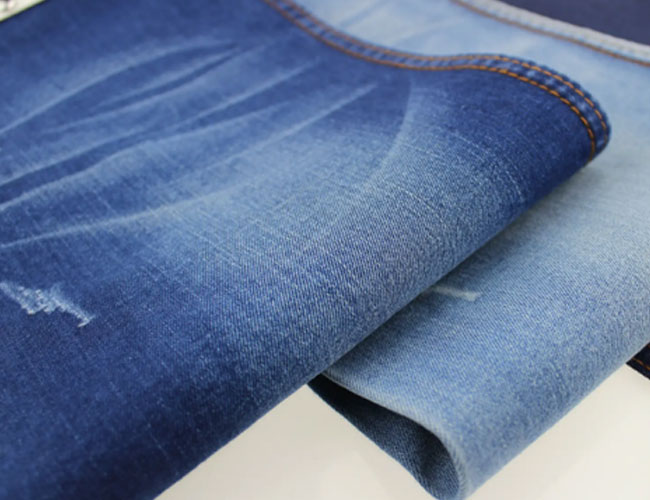
The stretchiness of melange fabric depends on the specific fibers used in its composition. Melange fabric can be made from a variety of materials, including natural fibers like cotton, wool, or synthetic fibers like polyester, and blends of different fibers. Each type of fiber has its inherent characteristics when it comes to stretch.
1. Natural Fibers:
- Cotton: 100% cotton melange fabric may have limited stretch. While cotton fibers can offer some flexibility, they are generally not as stretchy as synthetic fibers.
- Wool: Melange fabrics made from wool can have a natural stretch due to the elasticity of wool fibers. Wool can provide comfort and flexibility.
2. Synthetic Fibers:
- Polyester: Melange fabrics made from polyester or polyester blends can be engineered to have good stretch and recovery properties. Polyester is known for its elasticity, and the fabric can be designed to provide a comfortable stretch.
3. Blends:
- Cotton-Polyester Blend: A melange fabric made from a blend of cotton and polyester can combine the natural feel of cotton with the stretchiness of polyester. This blend is common in activewear and casual clothing.
- Other Blends: Depending on the specific blend of fibers used, the stretchiness of melange fabric can vary. Blends with elastane or spandex, for example, can enhance the fabric's stretch and recovery.
4. Knit vs. Woven:
- Knit Melange Fabric: Knit melange fabrics, commonly used for T-shirts and other casual wear, tend to have more stretch compared to woven fabrics. The knitting process allows for greater flexibility.
- Woven Melange Fabric: Woven melange fabrics may have less inherent stretch compared to knits. However, blends with elastane or other stretch fibers can still provide some degree of flexibility.
If stretchiness is a crucial factor for your intended use, it's recommended to check the product information, care label, and fabric content to understand the specific characteristics of the melange fabric you are considering. Additionally, garments with added stretch fibers, such as elastane or spandex, will generally provide more stretch and comfort.
Melange Fabric Cleaning and Maintenance.
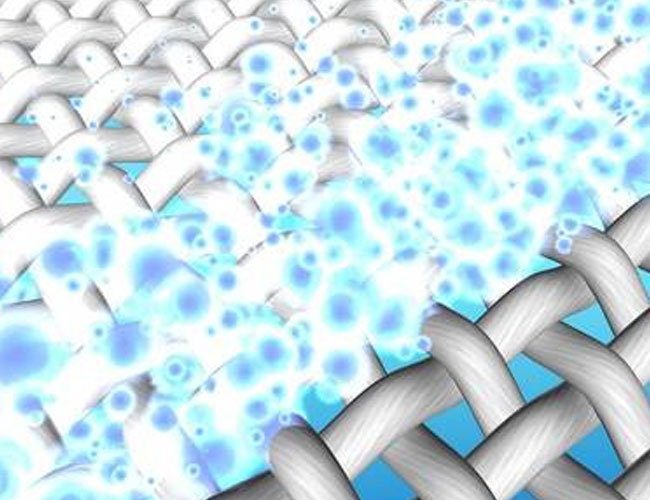
How to wash melange fabric? Cleaning and maintaining melange fabric should be done with care to preserve its appearance and longevity. The cleaning instructions may vary based on the specific fibers and blends used in the fabric, so it's important to check the care label on the garment. Here are some general guidelines for cleaning and maintaining melange fabric:
1. Read Care Instructions:
- Always check the care label on the garment for specific cleaning instructions. Different melange fabrics may have unique requirements based on the fibers used.
2. Separate Colors:
- If washing a melange garment, separate it from other items to prevent color bleeding. Some melange fabrics may tend to release excess dye during the first few washes.
3. Machine Washing:
- Use a gentle cycle on your washing machine to avoid excessive agitation. Choose a mild detergent, preferably one designed for delicate or colored fabrics. Cold water is often recommended to prevent color fading.
4. Hand Washing:
- For delicate melange fabrics, consider hand washing in cold water with a gentle detergent. Gently agitate the water and avoid wringing the fabric, as this can distort its shape.
5. Avoid Bleach:
- Avoid using bleach, as it can cause discoloration and damage to melange fabrics. Instead, opt for color-safe bleach if needed, and follow the manufacturer's guidelines.
6. Drying:
- Air drying is often recommended for melange fabrics to prevent shrinkage and maintain color vibrancy. Lay the garment flat on a clean, dry surface to maintain its shape.
- If machine drying is allowed, use a low heat setting. Be cautious about high heat, as it can cause shrinking and damage to certain fibers.
7. Ironing:
- Follow the care instructions regarding ironing temperature. If ironing is necessary, use a low to medium heat setting to avoid damaging the fabric. If the fabric contains synthetic fibers, use a pressing cloth to prevent shine or melting.
8. Stain Removal:
- Attend to stains promptly using a gentle stain remover or spot-cleaning method. Test any stain remover on a small, inconspicuous area first to ensure it won't affect the fabric.
9. Avoid Direct Sunlight:
- Prolonged exposure to direct sunlight can cause color fading in melange fabrics. Store garments in a cool, dark place when not in use to maintain their vibrancy.
10. Professional Cleaning:
- For garments with complex constructions or intricate details, consider professional dry cleaning. Be sure to inform the dry cleaner about any specific details or concerns related to the melange fabric.
Always refer to the care instructions provided by the manufacturer for the specific melange fabric you have, as different fibers and blends may have unique care requirements. Taking proper care of melange fabric can help preserve its appearance and ensure the longevity of your garments.
Is Melange Fabric Harmful?
Melange fabric itself is not inherently harmful. The term "melange" refers to a type of fabric characterized by a blended or mottled appearance achieved through the combination of differently colored fibers. The safety of melange fabric depends on the specific fibers used in its composition and any chemical treatments applied during manufacturing.
Here are key considerations:
1. Fiber Composition:
- The safety of melange fabric is closely tied to the types of fibers used. Common natural fibers like cotton, wool, linen, and silk are generally considered safe and well-tolerated by most people.
- Synthetic fibers such as polyester and nylon are also generally safe but may have specific care and use instructions. Always check the fabric content label for information on the fibers used.
2. Dyes and Chemicals:
- The dyes and chemicals used in the production of melange fabric can vary. Some dyes may contain substances that could cause skin irritation or allergies in sensitive individuals.
- Many manufacturers are increasingly adopting eco-friendly and low-impact dyeing processes to minimize potential harm. Always check the care label and product information for details on the dyeing process.
3. Care and Use:
- Following proper care instructions is crucial to maintaining the integrity and safety of melange fabric. Incorrect washing, drying, or ironing methods may lead to damage or affect the fabric's safety.
4. Environmental Impact:
- Considerations about the environmental impact of textile production can also be part of discussions around the safety of fabrics. Some manufacturing processes may involve chemicals that are harmful to the environment.
5. Allergies and Sensitivities:
- Individuals with known allergies or sensitivities to specific fibers or dyes should exercise caution when choosing and wearing melange fabric. If you have skin sensitivities, perform a patch test on a small, inconspicuous area before prolonged contact.
It's important to note that regulatory bodies in various countries set standards for the use of certain chemicals in textile manufacturing to ensure consumer safety. Additionally, responsible manufacturers often conduct safety testing on their products.
To assess the safety of a specific melange fabric, consider the following steps:
- Check the care label and product information for details on fiber content, dyeing methods, and care instructions.
- Look for certifications or labels indicating compliance with safety standards.
- If you have specific concerns or allergies, consult with the manufacturer or choose fabrics with known hypoallergenic properties.
Conclusion.
This is the end of the introduction to melange fabric, welcome you to follow our website to check the latest fabric information.
Where to buy Melange Fabric? G&F GROUP INC. becomes your fabric partner of choice, providing exceptional quality and service for your projects. We are committed to providing our customers with exceptional service, not only in the quality of our products but also in the quality of the customer experience. Offering a wide range of in-stock fabrics, we can also provide customization to meet your specific needs, ensuring you get the perfect product.
Feel free to contact us at any time and our team will be eager to serve you. Whether you are looking for a specific fabric or have any questions about our services, we would love to build a relationship with you.
All Rights Reserved: https://www.groupgf.com/info-detail/melange-fabric
Copyright Notice: This is an original (translated) article from G&F Group Inc., please indicate the source from G&F GROUP INC... If there is any infringement, please contact us first.





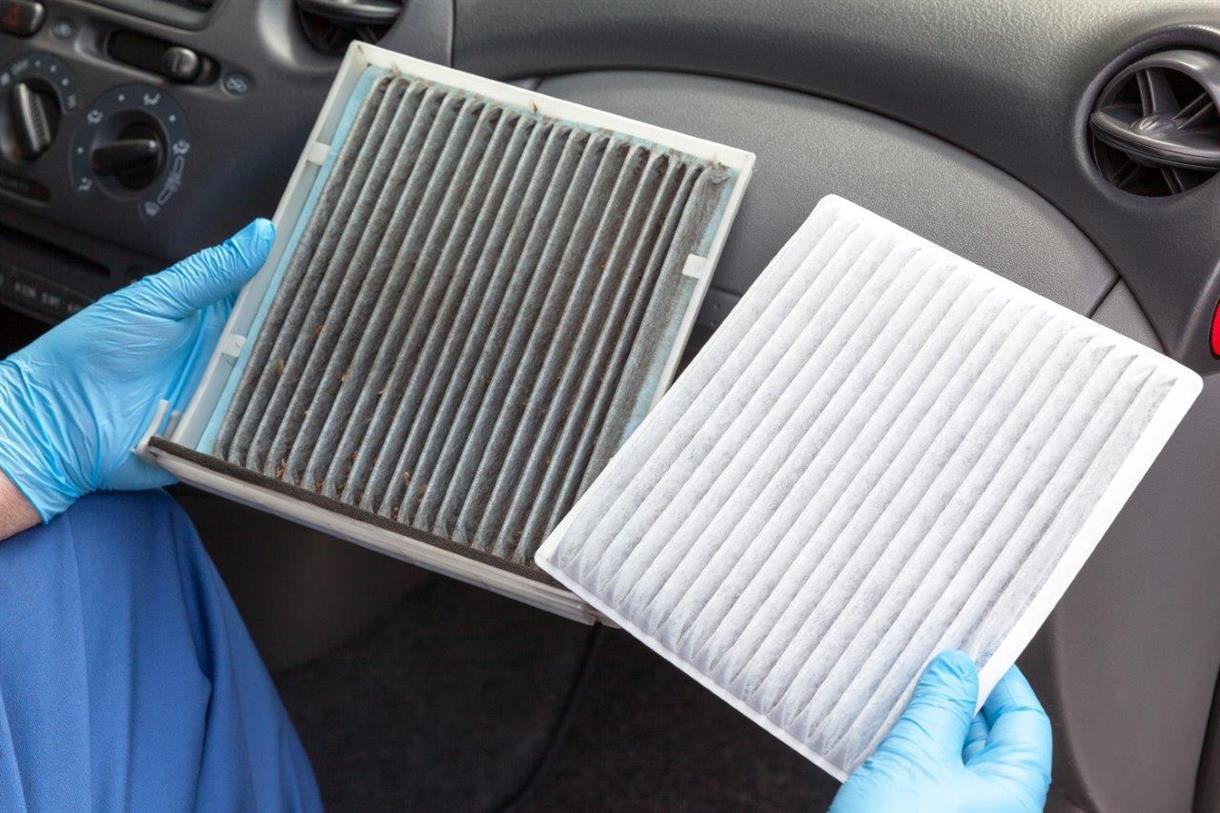 Nonwovens in daily life ----- filtration
Nonwovens in daily life ----- filtration
 Nonwovens in daily life ----- automotive
Nonwovens in daily life ----- automotive
 What is SAP – superabsorbent polymers
What is SAP – superabsorbent polymers
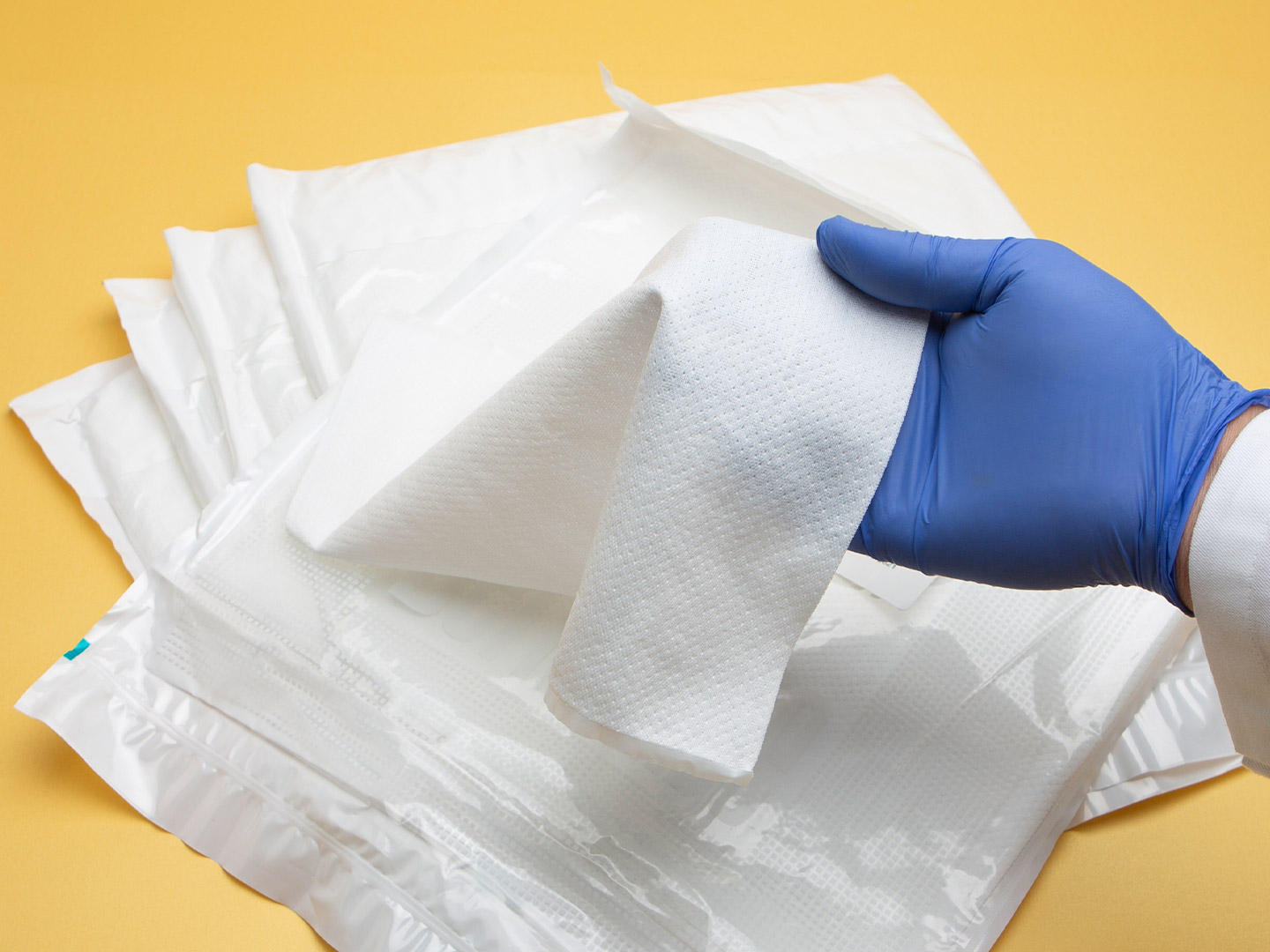 The Future of Global Nonwoven Wipes to 2029
The Future of Global Nonwoven Wipes to 2029